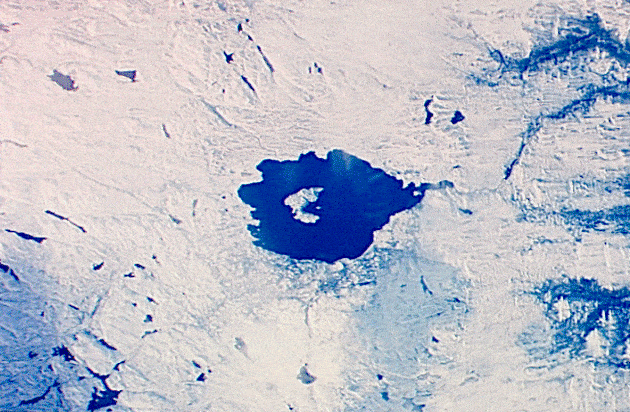Snow-clad Canada boasted, for the briefest of moments, the highest temperature ever recorded on Earth. The blistering event, clocking in at some 2370°C (4300°F), was the product of a chunk of space rock crashing down on the planet. Researchers looking into the event say we had no idea “real rocks can get that hot,” underscoring how devastating meteorite impacts can be.

Some 40 million years ago in what we now call Canada, an otherworldly visitor was dropping in for a visit. This meteorite crashed with such speed and force that it heated rocks at the impact site to over half the temperature of the Sun’s surface — some 2370°C (4300°F). This event, which has the distinction of being the highest temperature witnessed on our planet, was recorded in gemstones formed under that immense release of heat.
Falling skies
Impacts between space-faring matter and the Earth release a monumental amount of energy — which leads to some mind-bogglingly high temperatures developing in the collision zone. In fact, the more energetic of such impacts (those which involved larger pieces of space rock) shaped the planet into what we know today. They affect the chemical makeup of the atmosphere and crust, directly playing a part in Earth’s habitability, and could even have created the Moon.
Pinning an actual number on these temperatures, however, is a tricky proposition. For one, notable impacts took place a very long time ago, on the order of millions of years. Secondly, because they’re near apocalyptic events, shock waves released during impacts tend to literally vaporize both the meteorites and the rocks they hit. Which is really bad news if you’re trying to analyze those rocks and estimate how much heat they were subjected to.
So researchers have an idea of the upper extremes these temperatures can reach — estimated to be well over 2000°C (3632°F) — but no way to refine that estimate since there’s no geological evidence to test it against. After all, you’d need something that can shrug off an event of such magnitude it turns rocks into thin air.
Thankfully, a team led by Nicholas Timms, a senior researcher and lecturer of Geology at the Curtin University in Perth, Australia, has found one such substance. Their work focused on the 28-kilometer (17.4 miles) wide Mistastin Lake crater in Labrador, Canada, estimated to have been the site of a violent impact some 40 million years ago. The team reports that there was enough energy released during the impact to fuse rock-borne zircon into gem-like cubic zirconia, whose minimum formation temperature is 2370 °C.
“These new results underscore just how extreme conditions can be after asteroids strike,” Timms says.
“Nobody has even considered using zirconia as a recorder of temperatures of impact melts before. This is the first time that we have an indication that real rocks can get that hot.”
The finding showcases how extreme conditions can become in the few minutes after an asteroid impact, and offer us a sort of benchmark for shelters if we’re ever faced with such an event — for which we may be long overdue.
It also helps offer us a glimpse into the environment of early Earth, which was constantly and repeatedly bombarded from space. The team says these impacts could have churned the crust enough to keep hydrogen, carbon, and sulfur in circulation in the atmosphere. These elements are fundamental to life as we know it (you need to mix both hydrogen and oxygen to get water). However, they point out that too severe a bombardment would have negatively impacted the planet’s climate and chemical balance, making it less habitable in the long run.
The paper “Cubic zirconia in >2370 °C impact melt records Earth’s hottest crust” has been published in the journal Earth and Planetary Science Letters.






